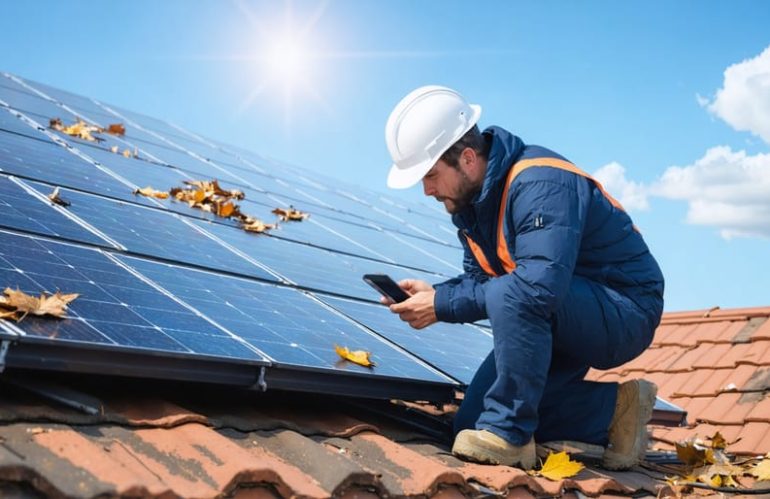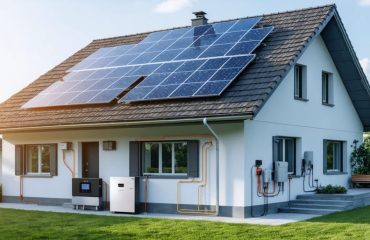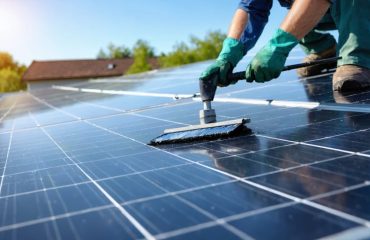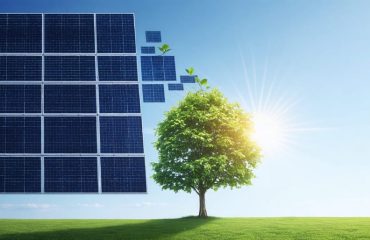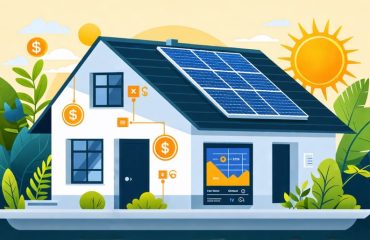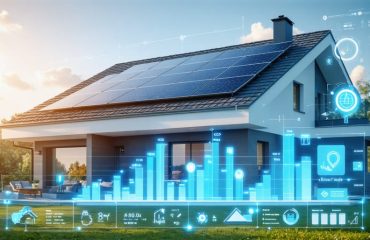When your solar panels stop producing power, the solution often lies in simple fixes you can identify within minutes. Check your inverter’s indicator lights first – a green light means normal operation, while red or orange signals a potential issue requiring attention. Inspect your panels for physical debris, snow, or shade from newly grown trees, as these common obstacles can reduce energy production by up to 25%. Monitor your system’s performance through your solar monitoring app or device to spot unusual drops in power generation that might indicate underlying problems.
If these initial checks don’t reveal the issue, examine your circuit breakers and ensure all connections are secure. Solar panel efficiency typically declines by only 0.5% annually, so sudden performance drops usually point to fixable issues rather than system failure. Whether you’re dealing with reduced output or complete system shutdown, understanding these basic troubleshooting steps helps determine if you need professional intervention or can resolve the problem yourself.
This introduction directly addresses homeowners’ concerns while maintaining an optimistic, solution-focused tone that encourages self-diagnosis without overwhelming technical details.
Common Reasons Your Solar Panels Aren’t Producing Power
Physical Obstructions and Dirt Build-up
One of the most common and easily fixable reasons for underperforming solar panels is physical obstruction and dirt accumulation. Even small amounts of debris, such as fallen leaves, bird droppings, or dust, can significantly reduce your panels’ efficiency. Think of your solar panels like windows – when they’re dirty, less light gets through, and in this case, less sunlight means less power generation.
Regular maintenance is crucial to keep your panels operating at peak efficiency. If you want to learn how to clean your solar panels, the process is relatively straightforward. Most residential systems can be cleaned using a garden hose and, if necessary, a soft brush with mild soap. However, avoid using harsh chemicals or abrasive materials that could scratch the panels’ surface.
During fall, pay special attention to fallen leaves that might collect on your panels. In urban areas, air pollution can create a film of grime that builds up gradually. Similarly, if you live in an area with frequent dust storms or near construction sites, your panels may require more frequent cleaning.
A good rule of thumb is to inspect your panels monthly and clean them at least twice a year. However, if you notice a sudden drop in energy production, checking for physical obstructions should be your first troubleshooting step.
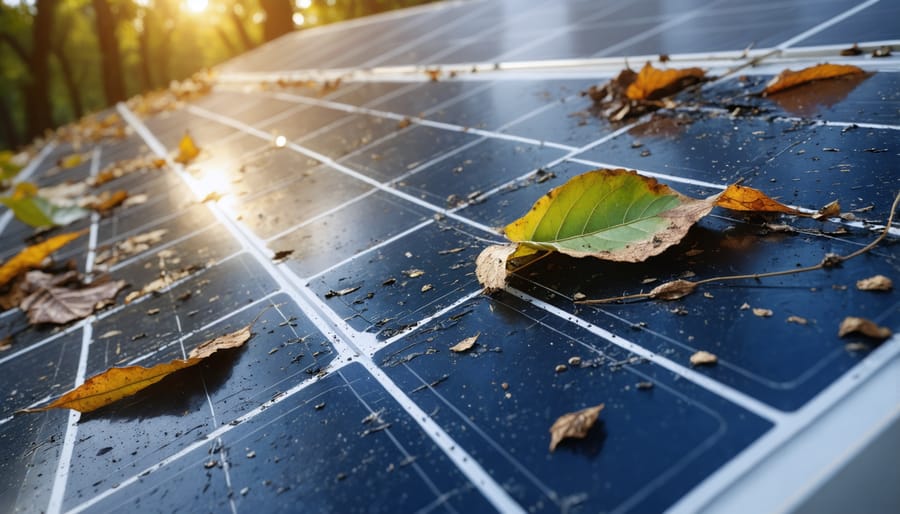
Inverter Problems and Warning Signals
Your inverter’s warning signals are like your solar system’s check engine light, helping you identify problems before they become serious. Common warning indicators include flashing red lights, error codes on the display screen, or complete shutdown of the system.
If you notice a solid red light, this typically indicates a serious issue requiring immediate attention. Flashing red lights often point to less critical problems, such as grid voltage fluctuations or temporary system interruptions. Green lights usually mean everything’s working properly, while yellow or orange lights might indicate the system is in startup mode or experiencing minor issues.
Check these common inverter problems first:
– No display or lights: Could indicate power supply issues or inverter failure
– Error codes: Write down the specific code for technician reference
– Buzzing sounds: May suggest internal component problems
– Intermittent shutdowns: Often related to grid connection issues
While some issues can be resolved by simply resetting your inverter (turning it off for 5 minutes, then back on), others require professional intervention. Always consult your inverter’s manual for specific warning light meanings and recommended actions. If you’re unsure about any warning signals or if the problem persists after a reset, contact a qualified solar technician to prevent potential damage to your system.
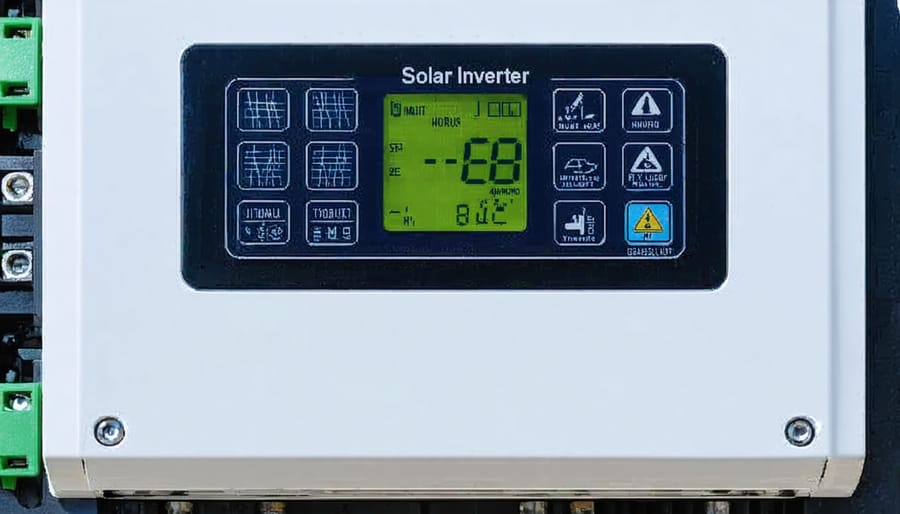
Loose or Damaged Wiring Connections
Loose or damaged wiring connections are common culprits behind solar panel malfunctions. Over time, weather conditions, temperature changes, and natural settling can cause wires to loosen or deteriorate. Signs of wiring issues include flickering inverter lights, inconsistent power output, or complete system shutdown.
While it’s tempting to investigate wiring problems yourself, exercise caution. You can safely perform a visual inspection of external wiring for obvious signs of damage like frayed cables, burn marks, or loose connections at the junction box. Look for rodent damage, exposed wires, or corroded connections, which are clear indicators of wiring problems.
However, when it comes to repairs or internal wiring issues, always contact a certified solar technician. Working with electrical systems carries significant risks, and improper repairs can void your warranty or create safety hazards. Professional technicians have the proper tools and expertise to diagnose and fix wiring problems safely.
Regular professional maintenance can help prevent wiring issues and extend your system’s lifespan. Consider scheduling annual inspections to catch potential problems before they affect your solar panel’s performance.
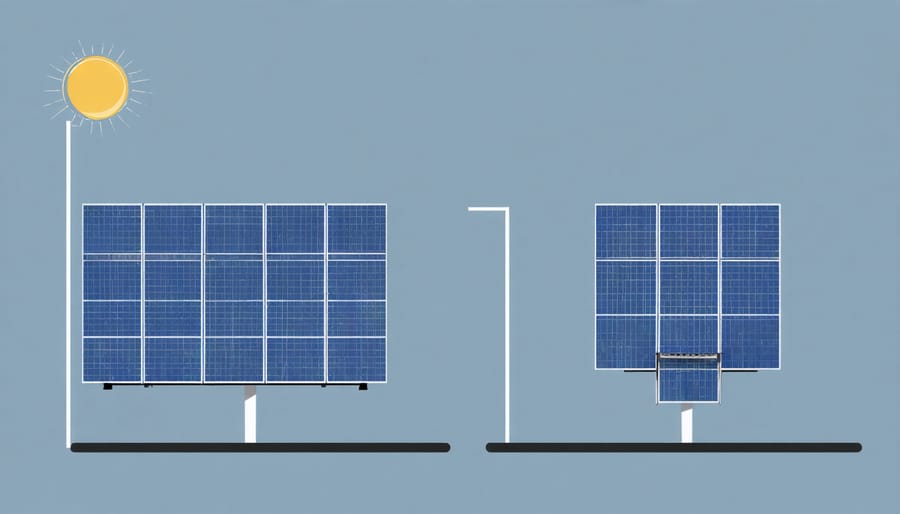
Quick Troubleshooting Steps You Can Do Safely
Before calling a professional, there are several safe and simple checks you can perform to identify common solar panel issues. Start by examining your monitoring system or app for error messages or unusual production patterns. Often, these can provide valuable clues about what’s wrong.
Next, conduct a visual inspection from the ground – never climb onto your roof without proper safety equipment. Look for obvious issues like debris, leaves, or bird droppings covering your panels. These obstructions can significantly reduce energy production and are usually easy to spot.
Check your circuit breaker panel for any tripped switches related to your solar system. If you find any, try resetting them. Similarly, you can reset your solar panels by following your system’s manual instructions, which often resolves minor electronic glitches.
Verify that your solar inverter is powered on – look for indicator lights or digital displays. A completely dark inverter typically indicates a power supply issue. For string inverters mounted on walls, ensure the cooling fans aren’t blocked by debris or vegetation.
During winter months, check if snow accumulation is blocking your panels. While it’s best to let snow melt naturally, you can use a specialized solar panel snow rake from ground level if necessary. Never use hot water or sharp tools to remove snow.
Document everything you observe, including dates, times, and weather conditions. This information will be valuable if you need to contact your installer or warranty provider. If these steps don’t resolve the issue, or if you notice any damage to the equipment, it’s time to call a professional.
When to Call a Professional
While many solar panel issues can be resolved through basic troubleshooting, certain situations require professional expertise. Contact a certified solar technician immediately if you notice visible damage like cracks, burns, or discoloration on your panels. These physical signs often indicate serious problems that could compromise your system’s safety and efficiency.
If you’ve performed basic maintenance but your energy production remains significantly lower than usual for more than a few days, it’s time to call an expert. This is especially important if you notice unusual fluctuations in your power output or if your monitoring system shows persistent error messages.
Electrical issues, such as loose or corroded wiring, require professional attention. Never attempt to fix electrical components yourself, as this can be dangerous and may void your solar panel warranty coverage.
Contact a professional if your inverter displays error codes or isn’t functioning properly. Inverter problems often require specialized knowledge and tools to diagnose and repair. Additionally, if you notice water accumulation under your panels or hear unusual sounds coming from your system, these could indicate serious installation issues that need expert assessment.
Remember, attempting complex repairs yourself might save money initially but could lead to more expensive problems and safety hazards in the long run. When in doubt, it’s better to consult a certified solar professional who can properly diagnose and fix the issue.
Solar panel issues, while frustrating, are often easily resolvable with proper attention and care. By regularly inspecting your panels for dirt, debris, and physical damage, you can prevent many common problems before they affect your system’s performance. Remember to monitor your energy production through your inverter display or monitoring app, as this can help you quickly identify when something isn’t working correctly.
If you’ve tried the basic troubleshooting steps we’ve discussed but are still experiencing issues, don’t hesitate to contact a qualified solar professional. While many problems can be resolved through DIY methods, some situations require expert intervention to ensure your system’s safety and optimal performance.
Make maintenance a regular part of your routine by checking your panels seasonally, keeping trees trimmed, and ensuring your monitoring system is working correctly. By staying proactive with your solar panel care, you’ll maximize your investment’s return and enjoy reliable, clean energy for years to come. Remember, a well-maintained solar system isn’t just good for your wallet – it’s great for the environment too.

